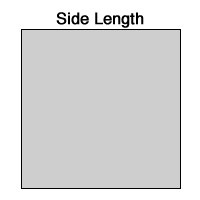Calculating square footage is a fundamental skill for homeowners, renters, and anyone undertaking home improvement or construction projects. Whether you’re planning to install new flooring, buy paint for your walls, or determine the size of a garden, knowing How To Figure Square Footage is essential for accurate estimations and cost-effective purchasing. This guide will walk you through everything you need to know about calculating square footage for various shapes and spaces.
Understanding Square Footage and Why It Matters
Square footage is simply the area of a space expressed in square feet. It’s a standard unit of measurement in the United States for determining the size of rooms, houses, and land. Understanding square footage is crucial for a multitude of reasons, including:
- Home Improvement Projects: Accurately calculate the amount of flooring, paint, wallpaper, tiles, or other materials needed.
- Gardening and Landscaping: Determine the area for planting beds, lawns, or patios.
- Real Estate: Understand the size of a property, room dimensions, and compare property values.
- Furniture and Rugs: Ensure furniture and rugs fit appropriately in a space.
- Heating and Cooling: Estimate the size of space for HVAC system requirements.
Essentially, knowing how to figure square footage helps you avoid overbuying or underbuying materials, saving you both time and money while ensuring your projects are completed successfully.
Step-by-Step Guide to Calculating Square Footage
The basic principle of calculating square footage involves measuring the length and width of a space and then multiplying these two measurements together. Here’s a detailed step-by-step guide:
1. Measure the Length and Width
First, you’ll need a measuring tape. Measure the length and width of the area you want to calculate. Ensure you measure in feet for accurate square footage calculations. For rooms, measure the longest sides as the length and the perpendicular sides as the width.
2. Ensure Consistent Units: Convert to Feet if Necessary
If your measurements are in inches, yards, centimeters, or meters, you’ll need to convert them to feet. Here are common conversions:
- Inches to Feet: Divide inches by 12. (e.g., 24 inches / 12 = 2 feet)
- Yards to Feet: Multiply yards by 3. (e.g., 3 yards * 3 = 9 feet)
- Centimeters to Feet: Multiply centimeters by 0.03281. (e.g., 100 cm * 0.03281 = 3.281 feet)
- Meters to Feet: Multiply meters by 3.281. (e.g., 1 meter * 3.281 = 3.281 feet)
For example, if you measure a wall and it’s 7 feet and 6 inches, you would convert 6 inches to feet (6/12 = 0.5 feet) and add it to 7 feet, resulting in 7.5 feet.
3. Calculate the Square Footage
Once you have both the length and width in feet, multiply them together to get the square footage.
Formula for Square Footage:
Square Footage = Length (in feet) × Width (in feet)For instance, if a room is 12 feet long and 10 feet wide:
Square Footage = 12 feet × 10 feet = 120 square feet (ft²)This means you have 120 square feet of space to work with.
Calculating Square Footage for Different Shapes
While rectangles and squares are straightforward, you might encounter different shapes. Here’s how to calculate square footage for some common shapes:
Square Area
A square has four equal sides. To calculate the square footage of a square, you only need to measure one side.
Formula for Square Area:
Area (ft²) = Side Length × Side LengthAlt text: Diagram illustrating how to calculate square footage for a square area by multiplying the side length by itself.
Example: If one side of a square room is 15 feet, the square footage is:
Area (ft²) = 15 feet × 15 feet = 225 square feetRectangle Area
A rectangle has two pairs of equal sides (length and width). This is the most common shape for rooms.
Formula for Rectangle Area:
Area (ft²) = Length × WidthAlt text: Illustration showing the formula for calculating square footage of a rectangle by multiplying its length and width.
Example: For a rectangular living room that is 18 feet long and 12 feet wide:
Area (ft²) = 18 feet × 12 feet = 216 square feetRectangle Border Area
This calculation is useful for projects like creating a border around a rectangular garden or patio. You need to calculate both the inner rectangular area and the total area including the border, then subtract the inner from the total.
Formulas for Rectangle Border Area:
Inner Area (ft²) = Length × Width
Total Area (ft²) = (Length + (2 × Border Width)) × (Width + (2 × Border Width))
Border Area (ft²) = Total Area - Inner AreaAlt text: Diagram explaining how to calculate the square footage of a rectangle border area by finding the difference between the total area and the inner area.
Example: A garden is 10 feet long and 8 feet wide with a 1-foot wide border:
Inner Area (ft²) = 10 feet × 8 feet = 80 square feet
Total Area (ft²) = (10 + (2 × 1)) × (8 + (2 × 1)) = 12 feet × 10 feet = 120 square feet
Border Area (ft²) = 120 square feet - 80 square feet = 40 square feetCircle Area
To calculate the area of a circle, you’ll need to know the radius (the distance from the center of the circle to the edge) or the diameter (the distance across the circle through the center).
Formula for Circle Area:
Area (ft²) = π × (Diameter / 2)²Where π (Pi) is approximately 3.14.
Alt text: Image demonstrating how to calculate the square footage of a circle using the formula involving Pi and the diameter.
Example: For a circular rug with a diameter of 8 feet:
Area (ft²) = 3.14 × (8 feet / 2)² = 3.14 × (4 feet)² = 3.14 × 16 square feet = 50.24 square feetCircle Border Area (or Annulus)
Similar to the rectangle border, a circle border area is the area between two concentric circles. This is also known as an annulus.
Formulas for Circle Border Area:
Outer Diameter = Inner Diameter + (2 × Border Width)
Outer Area (ft²) = π × (Outer Diameter / 2)²
Inner Area (ft²) = π × (Inner Diameter / 2)²
Border Area (ft²) = Outer Area - Inner AreaAlt text: Illustration showing the calculation of a circle border area by subtracting the inner circle’s area from the outer circle’s area.
Example: A circular patio with an inner diameter of 10 feet and a 2-foot wide border:
Outer Diameter = 10 feet + (2 × 2 feet) = 14 feet
Outer Area (ft²) = 3.14 × (14 feet / 2)² = 3.14 × (7 feet)² = 3.14 × 49 square feet = 153.86 square feet
Inner Area (ft²) = 3.14 × (10 feet / 2)² = 3.14 × (5 feet)² = 3.14 × 25 square feet = 78.5 square feet
Border Area (ft²) = 153.86 square feet - 78.5 square feet = 75.36 square feetAnnulus Area
As mentioned, the annulus area is the same as the circle border area, just approached perhaps with different known measurements, such as inner and outer diameters directly. The calculation is identical.
Formulas for Annulus Area:
Outer Area (ft²) = π × (Outer Diameter / 2)²
Inner Area (ft²) = π × (Inner Diameter / 2)²
Area (ft²) = Outer Area - Inner AreaAlt text: Diagram for calculating annulus area, which is the area between two concentric circles, by subtracting the inner area from the outer area.
Triangle Area
For a triangle, you can use Heron’s formula if you know the lengths of all three sides (a, b, c).
Formula for Triangle Area (Heron’s Formula):
Area (ft²) = (1/4) × √[ (a+b+c) × (b+c-a) × (c+a-b) × (a+b-c) ]Alt text: Image illustrating Heron’s formula for calculating the square footage of a triangle using the lengths of its three sides.
Example: A triangular garden plot with sides measuring 5 feet, 5 feet, and 8 feet:
Area (ft²) = (1/4) × √[ (5+5+8) × (5+8-5) × (8+5-5) × (5+5-8) ]
Area (ft²) = (1/4) × √[ (18) × (8) × (8) × (2) ]
Area (ft²) = (1/4) × √[ 2304 ]
Area (ft²) = (1/4) × 48 = 12 square feetTrapezoid Area
A trapezoid is a quadrilateral with at least one pair of parallel sides. To calculate its area, you need the lengths of the two parallel sides (a and b) and the height (h), which is the perpendicular distance between the parallel sides.
Formula for Trapezoid Area:
Area (ft²) = ((a + b) / 2) × hAlt text: Diagram explaining how to calculate the square footage of a trapezoid using the lengths of its parallel sides and height.
Example: A trapezoidal flower bed with parallel sides of 6 feet and 10 feet, and a height of 4 feet:
Area (ft²) = ((6 feet + 10 feet) / 2) × 4 feet
Area (ft²) = (16 feet / 2) × 4 feet
Area (ft²) = 8 feet × 4 feet = 32 square feetConverting Between Square Units
Sometimes, you might calculate area in one unit (like square inches or square meters) and need to convert it to square feet. Here are some common conversions:
- Square Feet to Square Inches: Multiply square feet by 144 (1 ft² = 144 in²)
- Square Feet to Square Yards: Multiply square feet by 0.11111 (1 yd² = 9 ft²)
- Square Feet to Square Meters: Multiply square feet by 0.092903 (1 m² ≈ 10.764 ft²)
- Square Yards to Square Feet: Multiply square yards by 9
- Square Meters to Square Feet: Multiply square meters by 10.7639
Practical Applications of Square Footage
Knowing how to figure square footage is practical in numerous situations:
- Flooring: Calculate how much tile, hardwood, laminate, or carpet you need for a room.
- Painting: Estimate the amount of paint required for walls. Paint coverage is often given in square feet per gallon.
- Tiling: Determine the number of tiles needed for a bathroom or kitchen.
- Landscaping: Plan garden sizes, calculate mulch or topsoil needs (though cubic footage is used for volume, square footage is the base measurement).
- Buying Fabric: Calculate fabric needed for curtains or upholstery projects.
- Real Estate: Quickly assess property sizes and room dimensions.
Conclusion
Figuring out square footage is a straightforward process once you understand the basic formulas and conversions. By following this guide, you can confidently calculate the area of various shapes, making your home improvement, gardening, and other projects more accurate and efficient. Whether you’re dealing with simple rectangles or more complex shapes, mastering square footage calculations is a valuable skill for any homeowner or DIY enthusiast.

